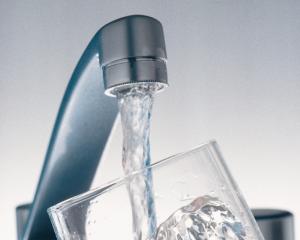Mr Facoory said opening windows provided fresh air but homes lost heat and cold homes encouraged dampness.
The Government campaign to install insulation and heat pumps had minimal benefit, as many young families could not afford the expensive electricity costs to heat their homes.
''People can only afford to put some much heat into their home, and a heat pump will only heat one area of their home, leaving the freezing cold, damp and mouldy bedrooms.''
And without adequate heat, an insulated house was more airtight and locked the moisture in, he said.
Mechanical ventilating systems could help if a house was adequately heated but the systems were another cost for a ''struggling'' young family, he said.
Children would continue to get respiratory illnesses and cost the health system until the dampness issue was addressed, he said.
The recent international study ''Dampness and moulds in relation to respiratory and allergic symptoms in children'' involved 20 countries, including New Zealand, and revealed that children living in a damp or mouldy home had more health problems.
Residents in poorer eastern European countries had warmer and dryer homes because there, warmth was a ''matter of life and death''.
But the many New Zealanders living in damp, cold homes were dying ''a slow death''.
The millions of dollars the Government had spent subsidising insulation and heat pumps was ''making a silk purse of a sow's ear'', because old homes were too expensive to heat, he said.
The old housing stock needed to be removed with a long-term plan of urban renewal, he said. And a basic level of power should be made available at an affordable price for families to heat their homes, he said.
Without cheaper electricity, the insulation and heat pump programmes would be in vain, he said.
Dunedin City Council energy manager Neville Auton said dampness was created by environmental and people factors.
''Typically, it's the people factors that are the biggest moisture generators.''
Ventilation systems increased electricity bills to a point that people often turned the units off, he said.
''Generally, I wouldn't recommend them, on the basis that the cost of the units, for what they're doing, is really high.''
For low-income households, opening a window for an hour each morning was ''just as good''.
EECA spokesman Mike Eng said mechanical ventilation systems would not solve the underlying causes of cold and dampness.
If a house was damp, the moisture source should be found before a mechanical ventilation system was installed.
A ventilation system cost between $3000 and $7000 to install and between 40c and $1.50 a day to run, he said.
''Alternatively, you could open windows and doors for a few minutes a day, a couple of times a day, at no installation cost and no running cost.''
Ventilation systems were not an effective way to heat a home, or solve dampness problems.
Fixing problems with damp at the source
AVOID:
- Drying your clothes inside. Dry them outside or use an externally vented clothes dryer.
- Using an unflued gas heater, as it releases large amounts of moisture.
USE:
- Externally vented extractor fans in your bathroom, kitchen and laundry.
- A lid on your shower cubicle to stop steam escaping in your bathroom.
- Lids on pots when cooking to reduce moisture release.
- A humidity gauge (hygrometer) to know when a home is getting too damp - more than 70% relative humidity.
KEEP:
- Furniture away from external walls. Leave a gap of 10cm or more to avoid mould growing behind them.
- Mattresses off cold floors and put them on a bed base so air circulates underneath.
- Wardrobes slightly open for ventilation.
CHECK:
- Under your house for mould or mildew.
- For water getting under the floor from drainage, guttering, downpipes or plumbing problems.
- Uncover any vents that may have been blocked by plants or soil, or to keep pests out.
- Get vents installed if there aren't any.
- Put a vapour barrier, such as thick polythene sheeting, on the ground to keep the moisture in the ground and stop the air under the floor getting damp.
- For leaks in wall and roof claddings and flashings.
- For leaks in plumbing services, including moisture getting into walls or floors near showers and baths.
- For mould regularly and remove if found. Check in wardrobes, under carpets and behind curtains.
Source: EECA












